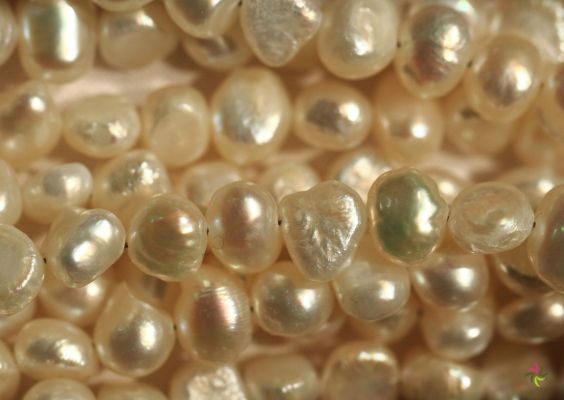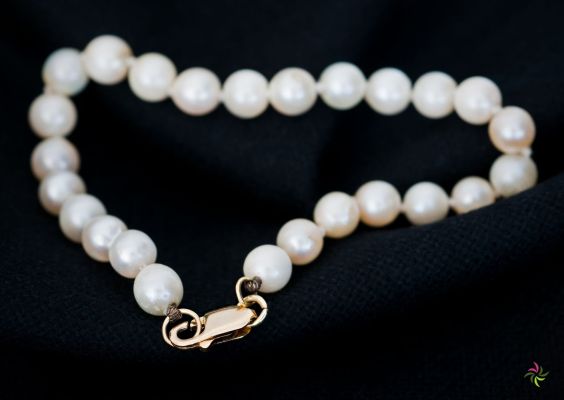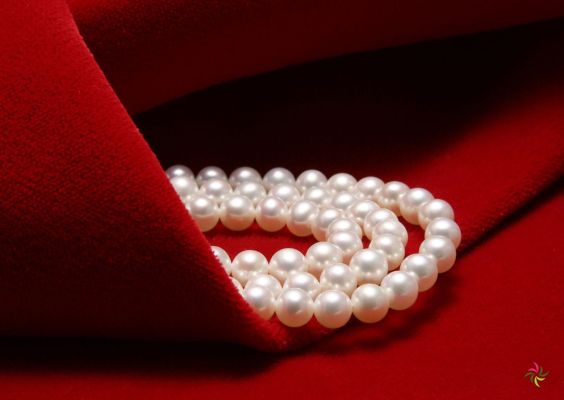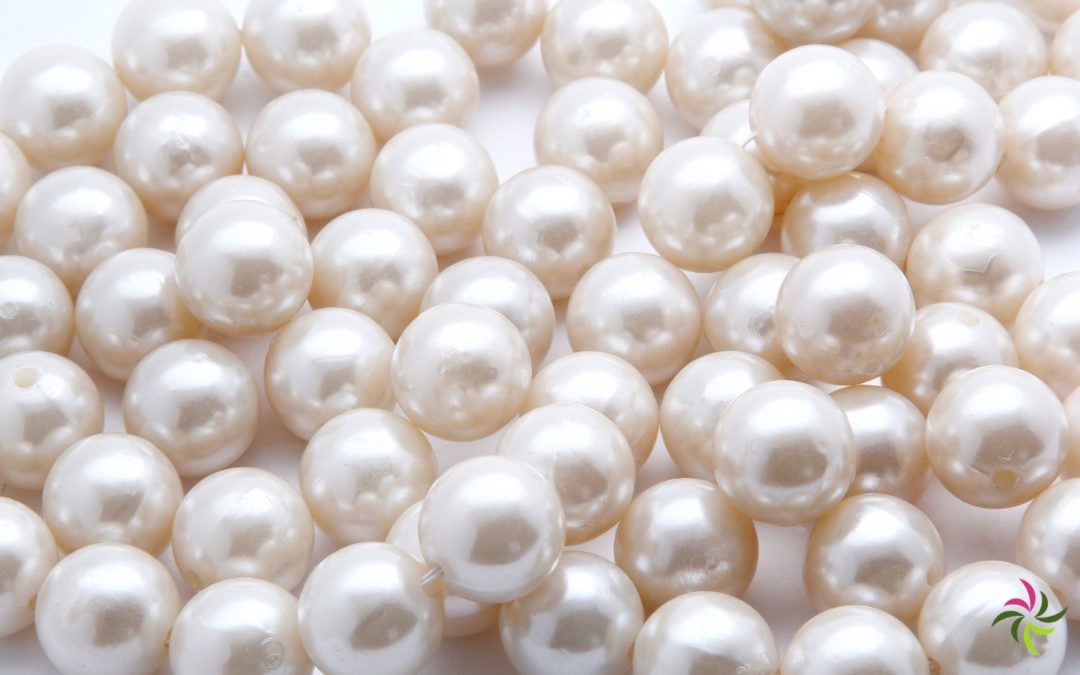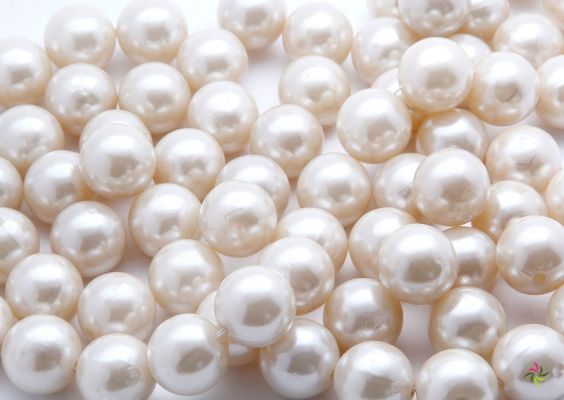Pearls, a girl’s best friend! Classy & stylish
“An oyster turns his problem into a pearl.”
Jack Kerklaan
Emergence of pearls
Pearl-forming sea oysters or oyster-like sea mussels live on long stretched oyster beds near the coast at a depth of approximately 15m. They are about 8 cm in diameter and their lifespan is about 13 years.
The light pink and creamy white coloured pearls of the best quality can mainly be found in the region of the Persian Gulf.
Divers collect the pearl oysters or orient pearls. Not every oyster contains a pearl, in a number of 30-40 oysters there is approximately one pearl.
Freshwater mussels are found in temperate climate zones.
Snails can also produce pearls, the best known being the trumpet snail. This produces a Conch, Pink or Rose pearl that is silky smooth and porcelain-like.
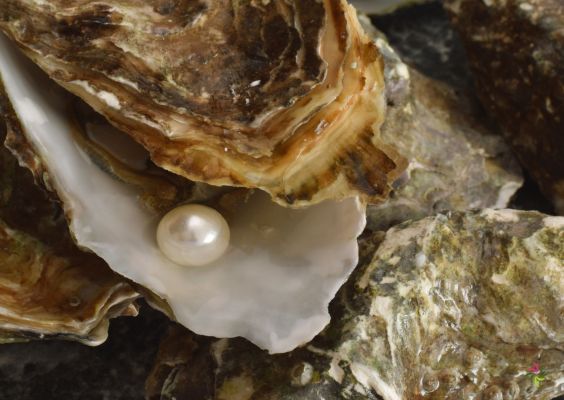
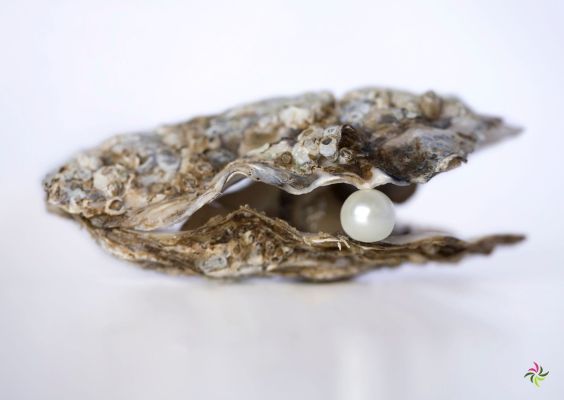
Did you know that…
…it is mainly in Japan that women dive for oysters. They swim and dive like the best of them whether they are 16 or 60 years old.
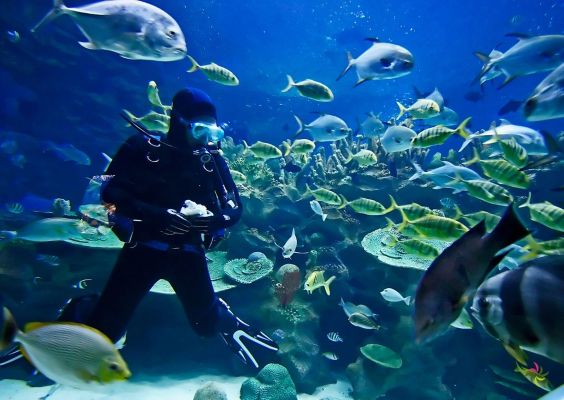
The different layers of a shell
The outer layer, the thickness gradually decreases towards the outside. It is a tough horny organic substance secreted by the edges of the mollusc’s mantle. This conchiline layer contains any colour pigments.
The prismatic layer, on the other hand, is a thicker layer consisting of small prisms of calcium carbonate (calcite). Once the outer layer and the prismatic layer are formed, they do not thicken, unlike the third layer.
The after layer or pearl layer is the third layer. It forms the inner layer of the shell and consists of calcium carbonate (CaCO3) which appears in the form of aragonite. These layers form extremely thin roof-shaped plates parallel to the shell with the conchiline as a binding agent between them. The edges of the ends of these layers are very irregular and zig-zag. During the life of the animal, the thickness of this layer increases.
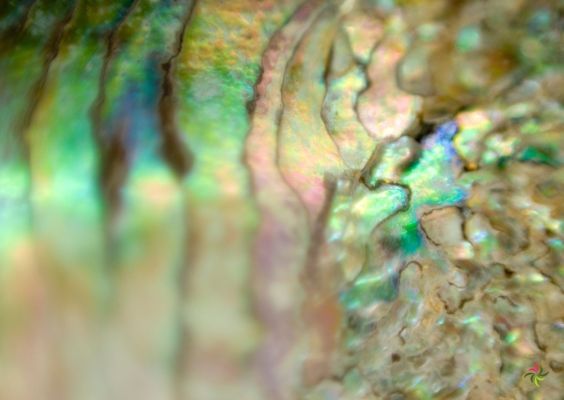
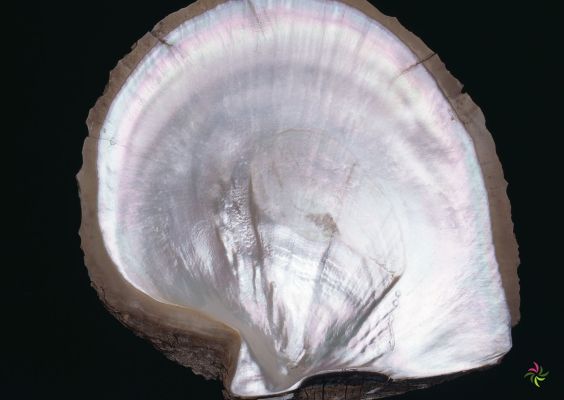
Pearls types
Natural pearls
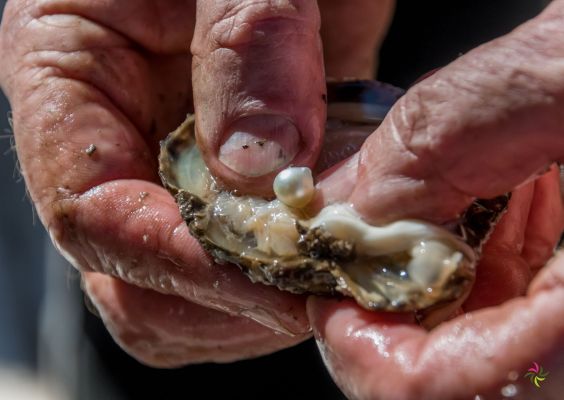
A pearl can be formed in an oyster when, for example, a grain of sand or a small parasite (vermin) invades the organism. The immune system encapsulates the intruder and layer after layer of pearl is deposited. Even when the intruder is completely encapsulated and can no longer cause any damage, the process of nacre deposition continues unabated.
Cultural pearls
Mankind would not be mankind, and has already made many attempts to imitate the workings of nature and to give it a helping hand in order to obtain larger pearls. In China in the 12th century, a method was developed to place objects of various shapes between the shell and mantle of the mollusc.
Around the last turn of the century (1893) in Japan, the pioneer Mikimoto carried out very important research work with regard to the production of cultured pearls.
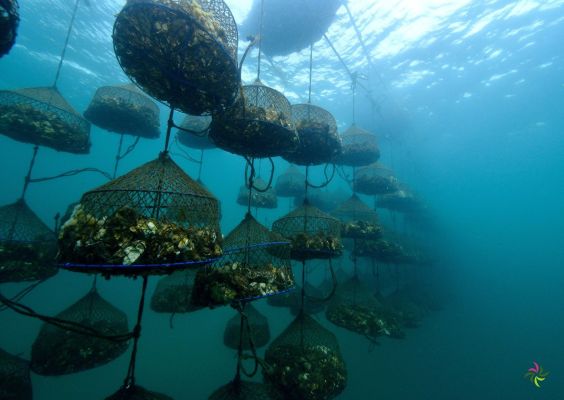
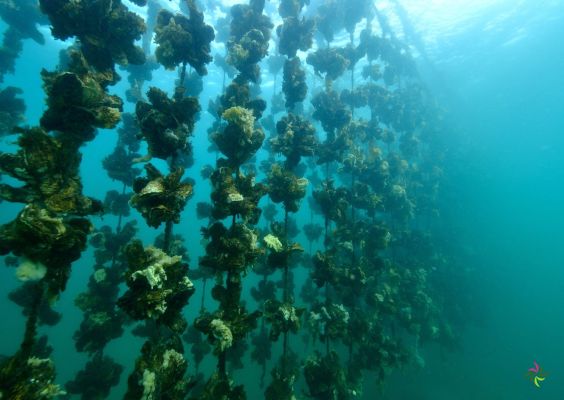
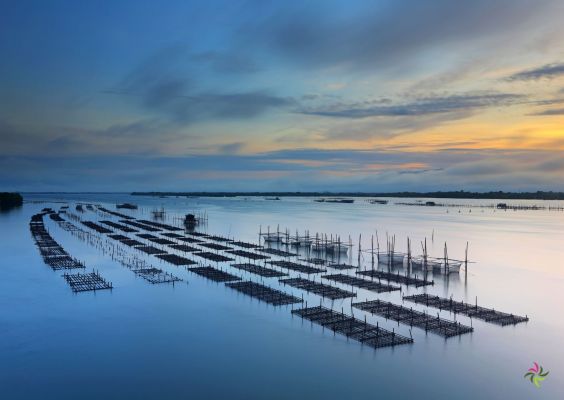
His method consists of removing a small piece of tissue, a round (mother-of-pearl) ball, from the soft shell of the oyster, which is then implanted into the living tissue of the oyster. Next, the oysters are placed in wire cages in calm water which are hung under rafts. Depending on the season, the depth is adjusted as the temperature of the water should never drop below 10°C. Depth control is also very important for the growth and quality of the pearls. Shallow water promotes the growth of the pearls, while deeper water enhances their colour and lustre. The pearls can be harvested after 3 to 4 years, but the best pearls are formed after 12 years!
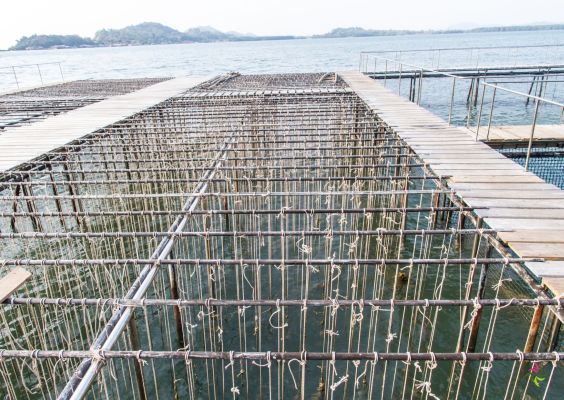
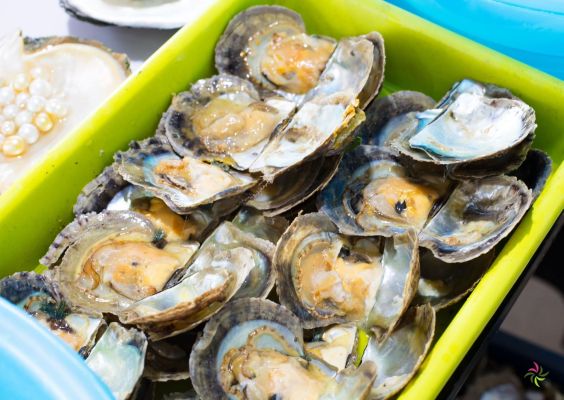
Freshwater pearls
The mollusc most commonly used from Lake Biwa is a mussel that is distinctly different from the sea oyster both in size and appearance. They can be up to 30cm long and 25cm wide, i.e. an elongated mussel. Freshwater mussels are also more resistant to water temperature fluctuations.
The mussels are inoculated in the winter or spring, because the water is colder then and the animal is less sensitive to the procedure. The mollusc is opened and several (40) small incisions are made. In these, mantle tissue (pieces of 5 to 7mm) of another mollusc is placed, this will ensure that the mantle tissue will produce mother-of-pearl. The animals are then about 3 to 4 years old and not yet mature. The treated mussels are hung from rafts at depths of 2 to 3 metres. Unlike the sea oyster that has to be collected and cleaned almost every other month, this is not necessary for the mussel. About 3 years after the intervention, when they are about 15 cm in size, the first harvest can take place. As the core is not round, the harvested pearls will also have an irregular shape. After the cultivation process, a negligible hollow remains of the core, like a scar.
The growth of mother-of-pearl in freshwater is faster than in seawater culture. After removing the first harvest of pearls, the molluscs are placed back for a second culture. About 70% of the first culture can be used again and survive the treatment. Pearls from the second culture are generally much flatter, but the lustre is much better. A third harvest generally does not give satisfactory results anymore in terms of quality.
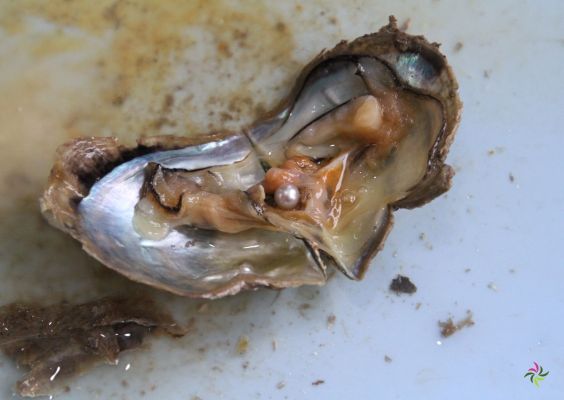
How is a pearl constructed?
A natural pearl is made up of a large number of thin concentric layers that are separated in the tissue. A bit like an onion, a peel structure. The more layers the pearl contains, the older it is.
A cultivated pearl consists of a pearl cluster with a parallel layered structure. The core is usually made up of mother-of-pearl from another shell species. The outside consists of a number of layers with pearl structure, deposited from the muscle tissue of the mollusc in which the core was implanted.
In freshwater pearls, the core disappears during the cultivation process, leaving only a small cavity.
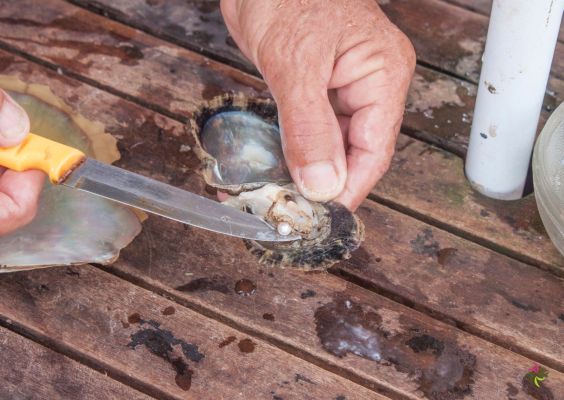
A false pearl is made from small spheres of special glass based on lead and enamel. The glass balls are covered with a layer of varnish composed of purified fish scales mixed with soluble components of “essence d’oriënt”. The basic core is treated several times according to the quality that one wants to obtain.
What criteria are used for the assessment of pearls?
Diameter and size
The diameter is expressed in millimetres, the larger the rarer.
In the past, the mass or volume of pearls was indicated by weight, expressed in grains or carats. A grain was equal to one quarter of a carat; this unit is no longer used. The dimensions of Japanese or Chinese cultured pearls, or natural pearls are usually between 2 and 9.5mm.
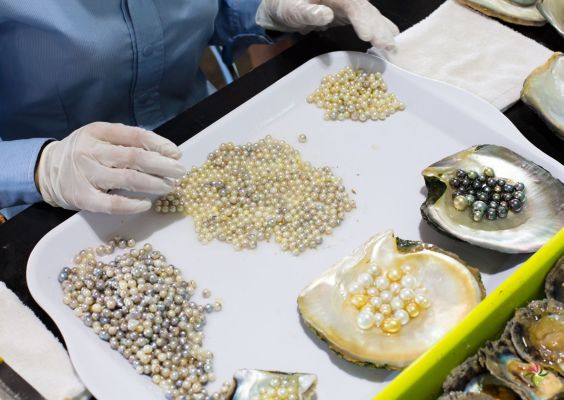
The shape
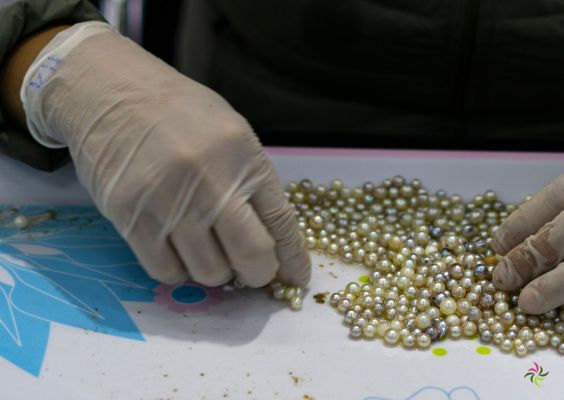
The more perfect the shape of the pearl, the rarer it is and the more expensive it is. Round and pear- or teardrop-shaped pearls are the most sought-after. Next are egg-shaped or oval pearls and button-shaped pearls. Semi-Baroque and Baroque pearls are the least popular due to their irregular and asymmetrical shapes.
The color
The colour should be as homogeneous and pure as possible for the white, cream, grey and/or black pearls. There is almost always a second hue visible: pink, cream, green, blue or yellow. The most popular colours are white-pink or pink-silver. Then there are the white, cream-pink, white-green and gold-plated pearls. The black pearls are mainly tasted in the greenish, blue or aubergine (purple) shades.
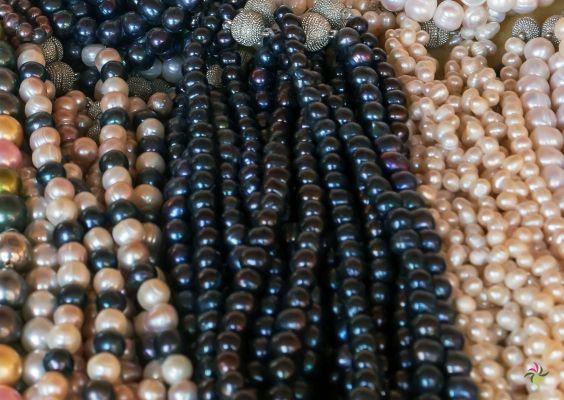
The brilliance and sparkle of the pearls
The brilliance and sparkle of the pearl depend on its ability to reflect light: shiny or rather dull, matt.
The brilliance is mainly due to two phenomena: on the one hand, the surface glass, is the reflection of light on the surface of the pearl. On the other hand, the depth glow, which is caused by the splitting of the light rays through the different layers of the pearl. The thinner and the more layers there are, the more light reflexion there is and thus the surface brilliance is enhanced.
The brilliance arises from the diffuse reflection of light that a pearl emits. It is also the degree of brilliance that emanates from a pearl. The brilliance arises from the dissolution and reflection of light in the aragonite crystals. The thickness of the mother-of-pearl provides a depth effect and creates the brilliance. Black or dark pearls have lost their brilliance due to the absorption of light by the colour, and only the surface gloss is visible. The brilliance is also one of the most important criteria in determining the price of a pearl.
The purity of the pearls
The purity of a pearl is determined by the presence or absence of defects, i.e. protrusions, hollows, coloured spots, colour zones, scratches, shadow zones, etc..
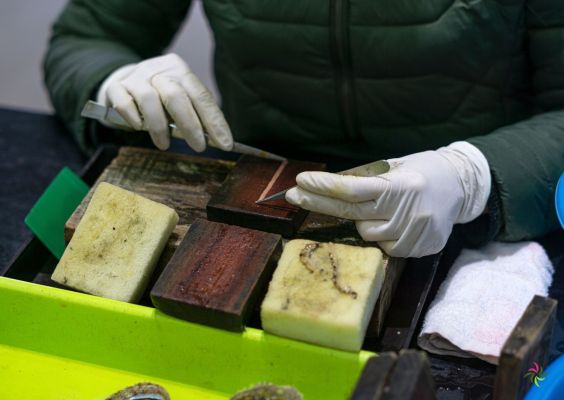
Thickness of the mother-of-pearl layer
Until the 1980s, this element was rarely taken into account by the better breeders who had a very good reputation regarding the thickness of the mother-of-pearl layer. Nowadays, however, economic competition has driven up mass production in both Japan and China, resulting in the production of cultured pearls with an inadequate nacre layer. The biological environment also suffers from pollution, which is the result of industrial and toxic waste being dumped into our waters. Pearl production in Lake Biwa has also disappeared for several years.
Last but not least, the daily care of pearls
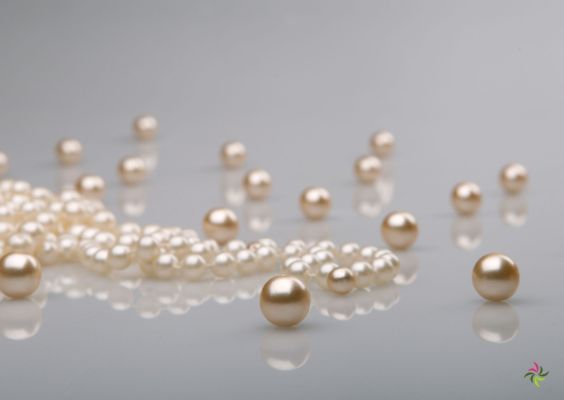
Pearls are products of living organisms and therefore require special care to protect them from environmental dryness and the action of aggressive acids.
Do not store your pearls in a place that is too hot or too dry, away from sunlight and heating.
Pearls do not like damp environments either, such as bathrooms, showers, etc.
Make sure that your pearls in your jewellery box do not rub against other jewels or edges, a plastic zip-bag can help.
Do not use hairspray, perfume or other beauty products after putting on your necklace.
Do not bring your pearls into contact with washing-up products, beauty products, or bleach.
Take off your pearl ring for household chores or a day at the beach.
Pearls are often glued on rings and/or earrings and hot water can cause the glue to dissolve, loosening your pearl.
Also remember when going to the hairdresser to take off your pearl earrings!
Pearl necklaces are knotted in such a way that all pearls are separated from each other by a knot. These knots ensure that two pearls do not rub against each other and cause damage. Also, these knots ensure that if your necklace breaks (the string is wearable), that not all the pearls roll on the ground.
If you wear your pearl necklace regularly, it is recommended to have it checked every 2 years for wear and tear and to have it re-knotted.
Keep in mind that a ‘freshly’ knotted necklace always feels shorter than a necklace that has been worn for a while, because there is a little stretch on the string.
